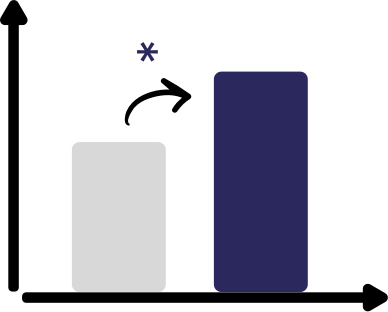In February 2020, Ofcom imposed new requirements on broadband, mobile and television providers to notify and send important information to their customers when contracts are coming to an end. Sky were looking to create a customer communication strategy in order to be compliant with these new regulations, whilst retaining customers and allowing them to simply and easily understand the options available to them.
They partnered with Cowry to optimise their customer communications and meet their goals.

Transform customer experiences
As part of a behavioural audit, the Cowry team analysed Sky's existing assets to identify psychological friction points. They found that there was too much information on the page, which was hindering customer's from focusing on key parts of the comms. Their task was to optimise the language using nudges and visually redesign the assets to motivate action.

Cowry’s team of Behavioural Designers and Choice Architects redesigned the communications to guide customers' eyes to key information and highlight what they'd miss out on by not renewing their service.
Three of the key psychological principles used to enhance the experience were:
Framing – When we view options vertically we often neglect the middle option, however when viewed horizontally we can guide the customer’s attention to the centre option. This is because our choices are affected by context and the relation to available comparisons.
 Loss Aversion – People are far more motivated to avoid losing something than they are to gaining something of comparable worth. We made it clear to the customer that they could soon lose their valued service if they did not act.
Loss Aversion – People are far more motivated to avoid losing something than they are to gaining something of comparable worth. We made it clear to the customer that they could soon lose their valued service if they did not act.
Experience Related Attribute – Product decisions and attitudes can be shifted by what is as subtle and as pervasive as mere references to time and money. Indeed, activating time (vs. money) tends to boost product attitudes and decisions. This time versus money effect is driven by heightened personal connection that consumers feel toward products.

50% increase in purchase intent compared to a control
*p score < 0.05
The issue facing market research is that conventional methods assume that customers make rational decisions about products using their conscious brain. However, the reality is that 90-95% of our decisions are made using our unconscious, System 1 brain. This is the reason that the attitudes expressed during focus groups do not always match the resulting behaviour.
Customers cannot articulate the drivers underlying their behaviour because they are unable to tap into their subconscious processing. In fact, it is often a change in behaviour that will lead to a change in attitude, not the other way around.
To gain a more holistic view from customer research, we need to talk to System 1. That’s why we used implicit tests to capture purchase intent. Implicit test results showed our redesign outperformed the control.

With the positive results of this intervention, Sky implemented Cowry's recommendations and updated their customer communications.
05 April
Read how Cowry identified the psychological principles relevant to encourage customers to buy holiday shopping items from Sainsbury's.
05 April
See how Cowry helped upskill the Amazon EMEA team with an intensive behavioural training week.
We’d love to chat to you about how to start applying behavioural science - book a slot below to catch up with Jez and find out more.
Download your free copy of On The Brain 📖